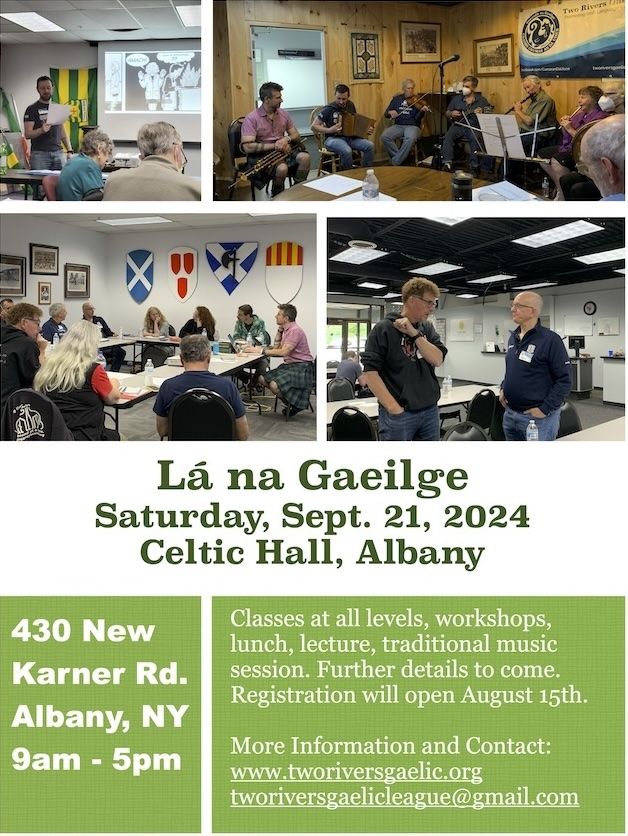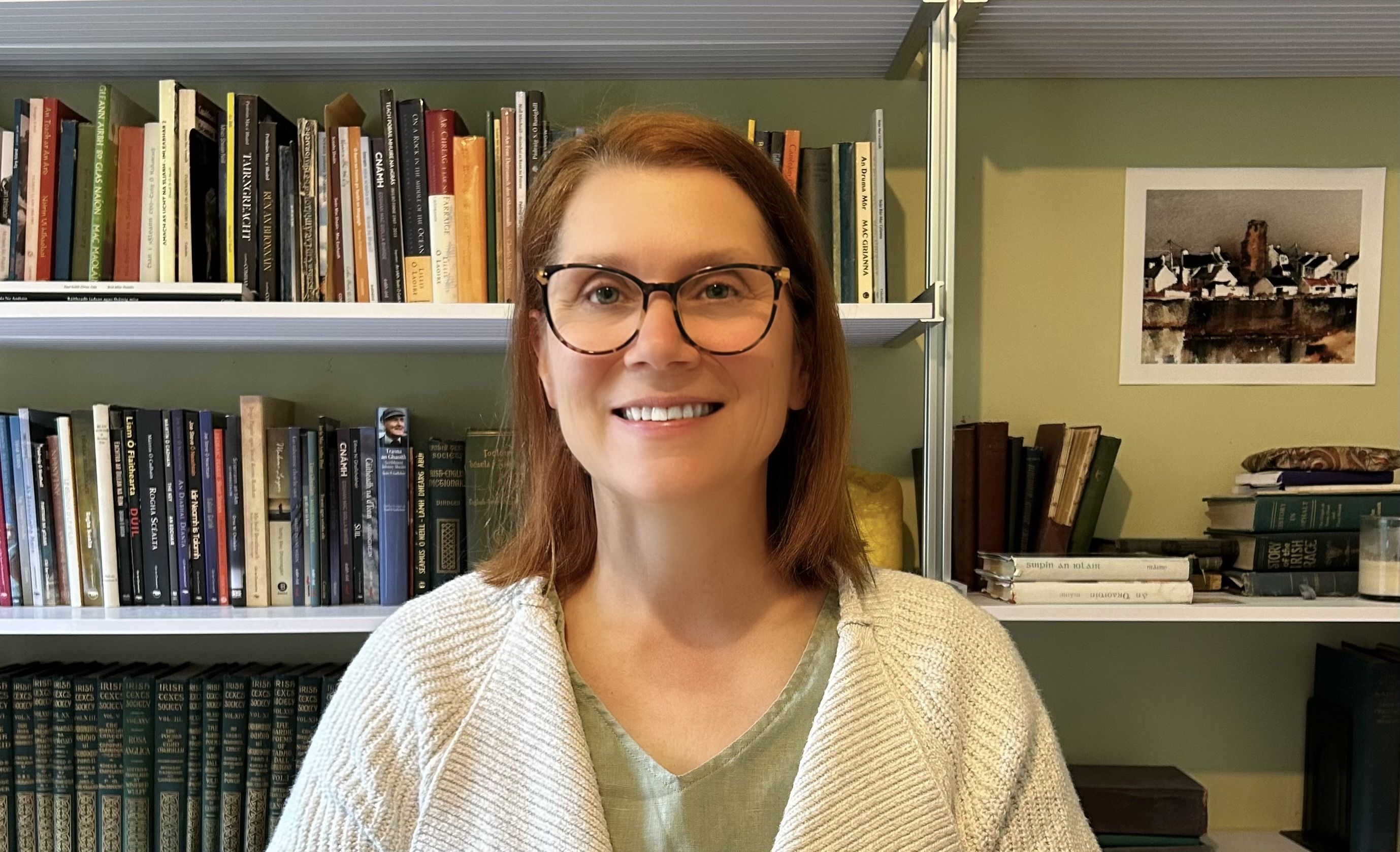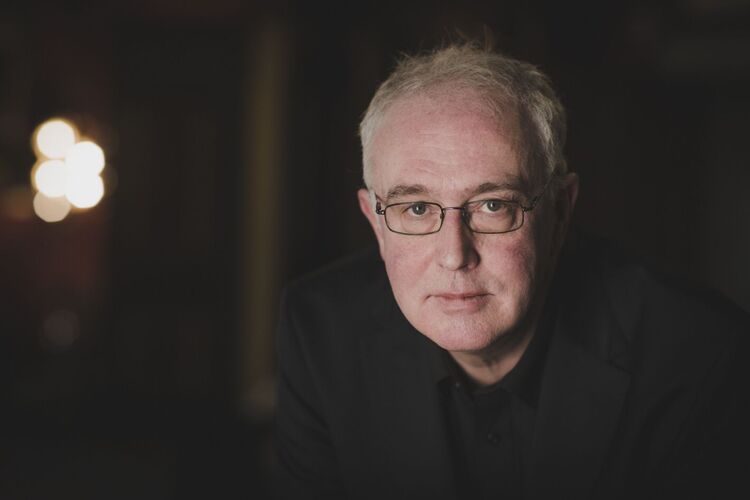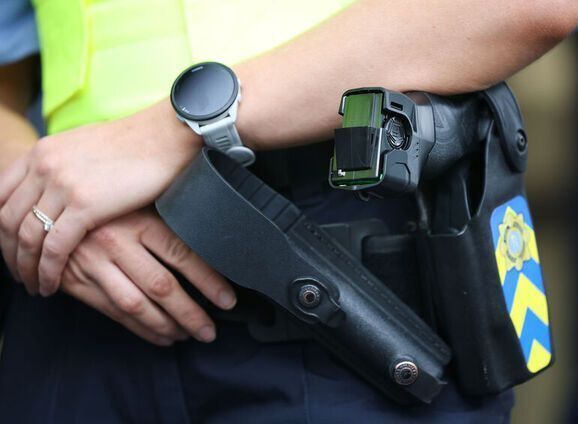“What’s in a name?” Shakespeare posed many moons ago. Well, plenty. History, identity, belonging…to name but a few. Seoirsín Ní Mheachair is a name well-known and respected in Irish language circles throughout the USA and Ireland.
It’s no coincidence that her family name Ó Meachair (Meagher) means kind, generous, and hospitable because through her love and endless work for the Irish language, she embodies all those qualities and more.
And she has an interesting story about her ancestor’s name. Her great-grandfather moved to the USA from Ireland when he was only 11-years-old. His name on the documents was Maher, but family lore goes that he changed it to Meagher because of his great admiration for Waterford-born Brigadier General Thomas Francis Meagher.
“His name was Patrick Maher. Maher is what's written on the boat when he came over, but he changed it to Meagher because of the General. You know, the Fighting ‘69, Thomas Francis Meagher because he admired the General,” she says.
And while many know the tale of the General and his storied life in Ireland, Tasmania, and the USA, her own great-grandfather’s passage to the USA and his life here is perhaps a tale less told but one to be forever remembered and revered.
“He was from Cashel, Co. Tipperary. He was born in the poor house there, and he came over when he was 11. He got an apprenticeship, and I think people chipped in to send him over. He got a job as an apprentice printer, a typesetter.”
And while she never knew him, his memory lives on through his life and legacy, not forgetting the family lore, and her love of the Irish language.
“He was a fascinating person,” she says. “I never knew him. But there were a couple of articles written about him because he was such a character in New York City. He was very involved in the Gaelic League.”
“He was a typesetter for The Forward, which is a Yiddish newspaper. He was a self-taught, totally self-taught person,” she adds.
It’s difficult to comprehend just how an 11-year-old could make such a big move to a distant and different land, and then not only survive, but to thrive and go on to achieve so much.
“So, he taught himself Irish in this country,” she says. “He taught himself how to play the pipes; he was very musical. And he was just an endlessly curious person.”
It really must run through her blood as she didn’t know of her great-grandfather’s history and his story when she started to study the Irish language.
“I knew none of that really,” she admits. “I didn't even know he was that interested in the Irish language. Bless him. Yeah, he was something.”
And they say every picture tells a story. Well, the photo of Seoirsín in her home office in this article really paints a picture of history, heritage, and the heart.
“Just a couple of years ago, one of my father's cousins emailed me and he said, ‘I've got a whole pile of books from your great-grandfather, (his grandfather), that are all Irish books. And I know you're interested, so do you want them?’”
“And I said, I'd love them. So, a lot came from him. I got a bunch of Dineen dictionaries. I didn't have one and they were expensive. Now I have three. I'm like kind of obsessed. Can you tell?” she smiles. “They’re beautiful. There's some about the history of Ireland, but they're all these old books and just fascinating.”
There’s even a book in there inscribed to her great-grandfather from O’Donovan Rossa.
“He'd just gotten out of prison, and my great-grandfather met him,” she says, “and he inscribed the book to my great-grandfather, I couldn't believe it. Isn't that amazing?”
It's pretty amazing how this little labyrinth of language learning unfolded for Seoirsín, which goes back again to that same great-grandfather who had died a few years before Seoirsín was born.
“So, one of his daughters was very interested in the Irish language, my great aunt, and she married a man from Ireland who was an Irish speaker, so she learned Irish, and they spoke it together, and their children became interested.”
It was when this aunt would sing as Gaeilge at one of their big Irish family parties that Seoirsín was caught under the spell of the language.
“When I heard it, it was just like magic. It was like something exploded inside of me,” she says.
It wasn’t, however, until she was at an Irish fair in the area where she lives in Rhinebeck, NY, that her learning journey with the Irish language began. And an 8th grade aspiration also came flooding back.
“When I was in eighth grade, we had to take a career test,” she says. “And we had to write what we wanted to be when we grew up. I wrote that I wanted to be a sheep farmer in the west of Ireland. Can you imagine?”
Maybe what she didn’t imagine is that those aspirations for Ireland would take her across the USA and indeed to Ireland to dedicate her life and love to the Irish language, even if the sheep farming never materialized. She worked as a speech pathologist for over 25 years, just finishing last year.
And who was at that Irish fair, over 20 years ago? None other than Armagh native, Ethel Brogan, who founded Daltaí na Gaeilge. While Seoirsín had only gone to check it out, Ethel soon had her signed up for the next immersion program.
"She said, you have to come to the immersion weekend. I said, immersion weekend? Like, I just walked up to the tent. I don't know one word of Irish, you know, I don't even know what your sign means."
Well, this was neither the time nor place to be sheepish. This was the month of September and Seoirsín was signed up for the next immersion course the following February and has never looked back...although she nearly did.
“I almost turned around. I can't imagine if I had. I got to the front door. I was terrified. And they were so lovely and so welcoming, so warm that I felt immediately at home, and I loved it from the first moment I walked in there. I felt like this is where I'm meant to be.”
That’s over 20 years now. And she has been busy. Iontach gnóthach. Seoirsín has done many more courses through Daltaí na Gaeilge; Irish translation courses through Maynooth University; set up a branch of Conradh na Gaeilge: Craobh Chumar an Dá Uisce; and is now Vice-President of the organization where it all began for her: Daltaí na Gaeilge.
Looking from the outside in, she feels she can see and feel the beauty of the language.
"I think you get a different perspective when you're in America, you're looking from the outside. And so you see something amazing that maybe the local people do not. And you think, oh, how are you not seeing this jewel?"
She has been working as a translator, but perhaps the jewel in the crown will be when she combines her background in speech pathology with the Irish language. So, she has a quest, and another task on her hands.
“I don't think there is an Irish medical dictionary available. And a lot of things must be translated into medical terminology. So, I thought, there's a need for something like that,” she says.
How she finds so many hours in the day is anyone’s guess, but she has just returned from Ireland after organizing and taking part in the inaugural course, Blaiseadh na Gaeltachta.
She wanted a course immersed in the very heart of the Irish Gaeltacht with language from the local native speakers.
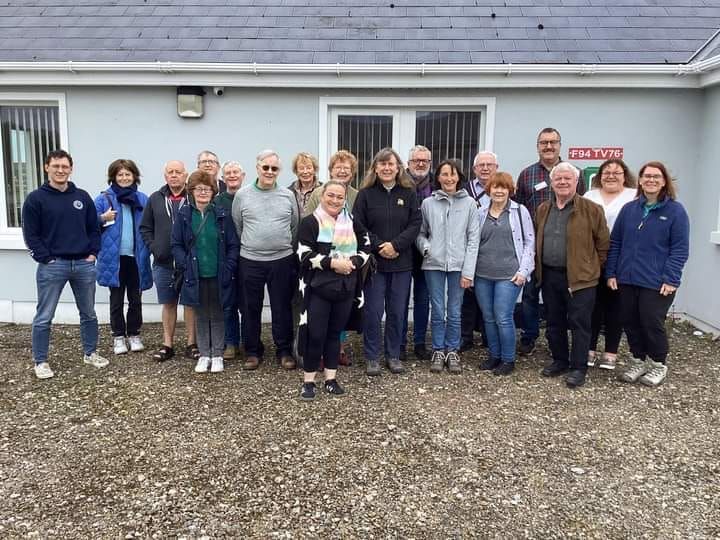

"So, we got a lot of real local people, speaking the language in a natural environment," she says.
And, off she went with a group of enthusiastic speakers embarking upon their journey to Rann na Feirste, Oileán Thoraigh and the Donegal Gaeltacht. Everyone taking part was a fluent speaker from all over the USA and Ireland.
“The course was jointly run by Conradh na Gaeilge Craobh Chumar an Dá Uisce (Albany) and Seanchas Sheáin Néill (Rann na Feirste),” says Seoirsín.
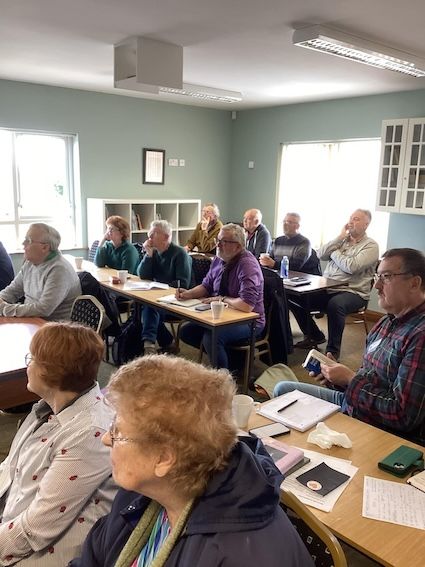
They had many great chats, walks amongst the breathtaking scenery of Donegal, singing, boat trips, oíche airneáil, and even Raidió na Gaeltachta made some recordings of the group.
"It was a roaring dive beyond all our expectations," she says. "We were on Barrscéalta a few times and there will be a one hour special about our Oíche Airneáil on Raidió na Gaeltachta!"

And now that everyone loved it so much and got a taste for it, they’re already knocking on Seoirsín's door asking if there’s going to be another Blaiseadh next year.
"Tá daoine ag iarraidh clárú don chéad bhliain eile!" she exclaims.
That's another 'to do' on her labor of love list.
Well, dear Gaeilgeoir, once you get a taste of the lovely lilt of Gaeilge Thír Chonaill you’ll always return for more! (all bias intended by the údar).
Craobh Chumar an Dá Uisce will be having a Lá na Gaeilge on September 21st 2024 in Albany NY, with registration opening on August 15th.
Lá na Gaeilge poster